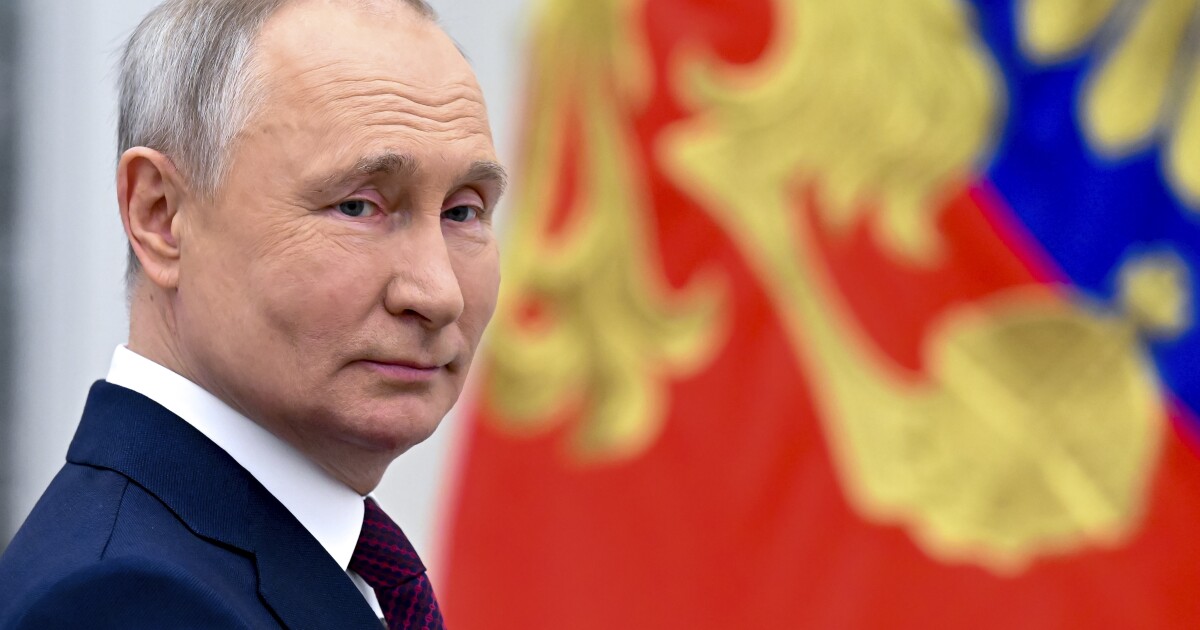

The Biden administration is fending off pressure to lower the Russian oil price cap, insisting that it is achieving its intended goal of limiting Moscow’s oil revenue despite new reports on illegal tankers and new ship tracking data that call the cap’s success into question.
Treasury Department officials have maintained that the cap has been successful so far in achieving its twin goals of driving down Russia’s oil revenue while also keeping its barrels on the market.
ONE YEAR AFTER RUSSIA’S INVASION OF UKRAINE: AN ENERGY WAR AND MASSIVE DISRUPTION
And President Joe Biden told European Commission President Ursula von der Leyen during her White House visit last week that there was “no desire” in Washington to reduce the $60 cap price despite a push from some European countries, the Wall Street Journal reported this week.
But getting a clear picture of the volumes that Moscow is shipping or the price point that buyers in China and India have been paying for Russian supplies is difficult.
That’s due, in part, to the large fleet of unregistered “shadow tankers” Moscow has amassed to sell its oil outside the cap, which trading giant Trafigura estimated last month contains around 400 crude oil tankers, as well as conflicting reports on how high Russian oil is trading.
Russian crude continued to sell for an average of $74 per barrel during the four weeks after the oil price cap came into force, researchers from Columbia University, the Institute of International Finance, the University of California, Los Angeles, and IE University said in a report published earlier this month.
That’s about a quarter above the $60 capped price for Russian crude and $22 higher than the Urals trading price for December, which reflected prices of just $52 per barrel.
Researchers said the high prices were the result of two factors: Russia’s reliance on illegal tankers, which they estimate shipped around 50% of Moscow’s crude exports in December, and a broader lack of transparency and enforcement from Western service providers in implementing the cap.
Though it is not illegal for Moscow to use non-Western shippers to send its oil to non-sanctions coalition countries, such as China and India, the G-7-led coalition has not introduced any central repository to collect attestations from Western service providers or audit those who might not be complying with the cap.
“When you introduce an oil price cap and you ask people how much Russia is getting money, nobody knows,” Maxim Mironov, a finance professor at the IE University Business School and co-author of the research paper, said in an interview.
Earlier this month, JPMorgan Chase also forecast that Russia would be able to maintain its oil output at pre-Ukraine invasion levels of 10.8 million barrels per day, underpinned by strong demand from China and India, which it expects to increase by a combined 1 million bpd this year.
Due in part to Russia’s stronger-than-expected exports, pressure is rising from some coalition countries to lower the capped price to cut into Russian President Vladimir Putin’s war chest. At least three European Union member countries, Estonia, Poland, and Lithuania, pressured the European Commission this week to lower the cap by 5% to $51.45 when it comes up for review at the end of the month, something the Biden administration has resisted.
Estonia, for its part, has called to halve the Russian price cap and urged the coalition to back stronger enforcement measures.
Stanford University’s International Working Group on Russian Sanctions, a group of 60 independent, international experts, similarly recommended slashing the price cap in its most recent assessment, published on the one-year mark of Russia’s war in Ukraine.
The group called for a $30 total reduction on Russian oil products, to be applied in increments of $10 every two months.
But the United States and other coalition countries have so far resisted this effort — due in part to concerns that slashing the cap could prompt Russia to take its oil off the market, threatening global supply.
CLICK HERE TO READ MORE FROM THE WASHINGTON EXAMINER
This view has been reiterated by Treasury Department officials, including by Treasury’s assistant secretary for economic policy, Ben Harris, who told reporters this week the cap had achieved a “best case scenario” outcome in the eyes of U.S. leaders.
One could look at the data and say, “‘OK, fine, barrels are flowing. That’s fine,’” Harris said of Russian crude exports. “But are you driving down Russian revenue? And the answer is decidedly yes.”





